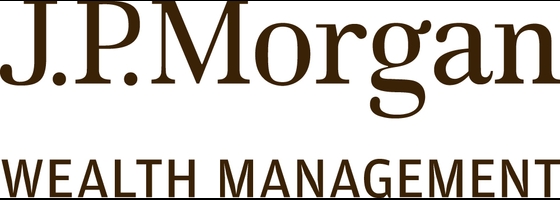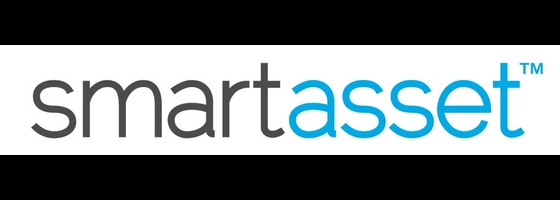Common Stock vs. Preferred Stock: What’s the Difference?

Our evaluations and opinions are not influenced by our advertising relationships, but we may earn a commission from our partners’ links. This content is created by TIME Stamped, under TIME’s direction and produced in accordance with TIME’s editorial guidelines and overseen by TIME’s editorial staff. Learn more about it.
Common stock and preferred stock are the two types of stock issued by a company to raise money for their business. Though both common and preferred stock represent ownership in a company for an investor, they’re two different types of investments with differing risks, returns and purposes.
Common stock comes with voting rights and greater fluctuations in share price. Dividends are paid out when the corporation’s board of directors declare them.
Preferred stock is often called a “hybrid security” because its fixed-income dividend behaves like a bond even though it’s an equity investment. It comes with preferential status to other investors, which is where it gets its name. The increase in preferred stock share price is modest.
INVESTMENT AND INSURANCE PRODUCTS ARE: NOT A DEPOSIT • NOT FDIC INSURED • NO BANK GUARANTEE • MAY LOSE VALUE
This is a summary of the major differences between common and preferred stock.
| Common stock | Preferred stock | |
|---|---|---|
Share price | More potential for growth, but also for contractions. | Modest growth in value. |
Income | Usually based on capital appreciation of share price and board-declared dividends. | Reliable dividend income. Usually higher yields than Treasuries or bonds. |
Dividend | Varies, if offered at all. Dividend paid after preferred stockholders. | More consistent dividend, may be a fixed or fixed-to-floating rate dividend. Paid before common stockholders. |
Stock conversion | Not converted to preferred stock. | Some may be able to be converted to common stock. |
Voting rights | Yes | No |
Volatility | High | Low |
Purpose | Issued to raise capital for various business reasons, such as growth, paying off debt, or expanding into a new market. | Issued to raise capital for the company without affecting common stock; venture capitalists may demand preferred stock in the terms of their deal with owners. |
Bankruptcy/Liquidation Preferences | Last paid in bankruptcy. | Priority stockholder in bankruptcy, but does come after bondholders. |
Strategic benefit summary | Influence company with voting rights, benefit from price appreciation of the stock. | Solid, almost guaranteed dividend return for investors. Venture capitalists may want this type of stock to ensure they’re paid if the company fails. |
When it comes to the share price, the common stock price is the one you’ll see reported in the news and the one with greater fluctuations. It has a greater upside, but investors will also ride the downswings. For common stock, the price of a share is important. Increases mean investors earn income.
The preferred stock price has more gradual growth in its share price. The price is determined by dividing the total amount of dividends for the year by the money raised from issuing preferred stock.
Earning income from common stock is often based on capital appreciation as the value of the stock goes up when the business succeeds. There may be dividends, but they can only be paid out after preferred stock dividends are paid out.
Earning income from preferred stock is primarily through the dividend offered. There’s a set rate offered on the dividend of preferred stock, much like a bond.
Dividends for preferred stock are treated differently from those for common stock. With preferred stock, the dividend is fixed. It’s paid out first, before dividends on common stock can be calculated.
Dividends on common stock are paid second and depend on how they’re set up by the corporation’s board. They may be paid out quarterly or whenever the board of directors declares a dividend payout.
It may be possible in certain instances to convert preferred stock to common stock, but not the other way around.
When it comes to voting rights, only investors with common stock have them. Common stock offers investors voting rights, which gives them influence in the company. Preferred stock does not offer investors voting rights.
Common stock has much more volatility in share price than preferred stock. Volatility comes from daily price swings resulting from market forces at play.
Companies have different reasons for issuing common versus preferred stock. There is no set amount for how much stock a company issues in common and preferred stock, but, in general, the amount of common stock issued is far greater. For common stock, corporations looking to go public may want to expand their business, pay off debt, attract and compensate potential employees, or raise awareness for their business.
When corporations issue preferred stock, it is also to raise money, but generally doesn’t affect common stock investors since there are no voting rights. It’s also less costly for the company.
Common stock is different from preferred stock in case of bankruptcy. Preferred stock receives preferential treatment, meaning, those stockholders are paid first if there are any assets left to liquidate when a company goes under. Common stockholders are only paid after preferred stockholders are paid.
Investors who can ride the ups and downs of market fluctuations may see a greater upside in share price than an investor in preferred stock. Common stock investors also have voting rights and can share in dividends when they’re declared.
Investors who are looking for steady dividend income and preferential liquidation status (should the company declare bankruptcy) may want to consider preferred stock. Additionally, preferred stock is usually what venture capitalists demand to help protect their investment in a company. If you’re looking for more advice, it may be a good idea to consult a financial advisor. Companies such as SmartAdvisor by SmartAsset can help you find one.
Investing in either common or preferred stock grants you factional ownership in a company, but your money will grow differently depending on which investment you choose. Common stock investments have a potentially larger reward, but also come with more risk because they’re exposed to the market. Preferred stock investments are a safer investment with fixed-income dividends, but investors may miss out on a share’s appreciation they would get with common stock.
A common stock is a class of stock issued by a company that represents a portion of ownership in the company. It comes with voting rights, a share in dividends when issued by the company, and some liquidation rights in the case of bankruptcy. Corporations issue stock to raise money for operations and growth. It’s the type of stock most people buy when investing in stocks.
A preferred stock is a class of stock characterized by a set dividend payment with a rate of return comparable to a bond. Preferred stock also has priority in bankruptcy liquidation, but doesn’t have any voting rights. It's looked at as a hybrid investment that has equity, but acts like a bond.
Investors can buy and sell both preferred and common stocks with a brokerage. It may also be possible to buy preferred stocks from a direct stock plan, a dividend reinvestment plan, or a stock fund. An app like M1 Finance may be able to help you make these trades.
The income earned from preferred stock dividends is a set rate and is generally considered a safer investment than common stock. The share price of preferred stock is much less volatile than the share price of common stock. Venture capitalists generally demand preferred stock in their deals so they can have priority in case of bankruptcy and liquidation.
The information presented here is created by TIME Stamped and overseen by TIME editorial staff. To learn more, see our About Us page.





